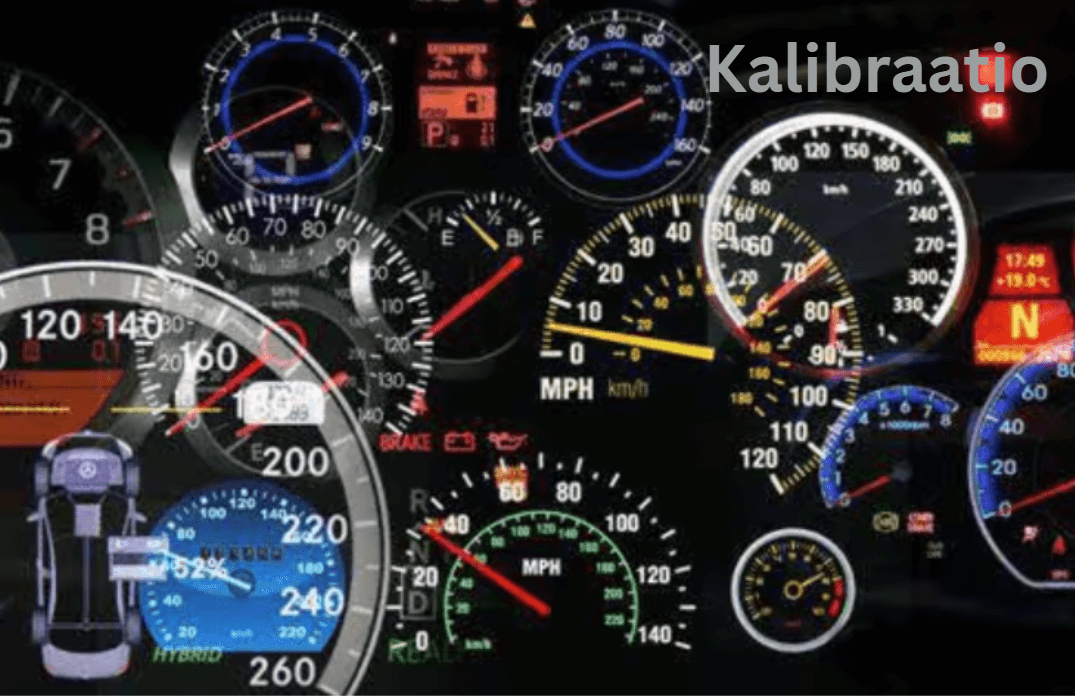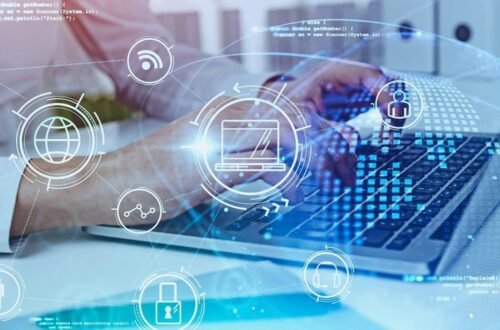In today’s rapidly advancing technological world, precision and accuracy are paramount. Whether it’s in industrial equipment, laboratory testing, or scientific research, ensuring that instruments measure correctly is vital. One key process that helps maintain accuracy and consistency is kalibraatio, or calibration. Kalibraatio ensures that measurement instruments provide the correct outputs and conform to a standard, offering reliability and precision. This article explores everything you need to know about kalibraatio, its significance, methods, and applications across different industries.
What is Kalibraatio?
Kalibraatio is the Finnish term for calibration, referring to the process of adjusting and verifying the accuracy of a measuring instrument. It involves comparing the readings from an instrument with a known reference standard and making adjustments to align the instrument’s output with the expected value. Calibration is necessary for ensuring that measurements are accurate, consistent, and reliable over time.
When an instrument is calibrated, its readings are checked against a known reference value. If discrepancies are found, the instrument is adjusted or fine-tuned to align with the reference. This ensures that the instrument’s measurements are precise and can be trusted for critical applications. Kalibraatio plays a crucial role in industries where accuracy is paramount, such as manufacturing, healthcare, research, and scientific experimentation.
Why is Kalibraatio Important?
Kalibraatio is vital for a variety of reasons. For one, it ensures that instruments produce reliable and consistent measurements. Without proper calibration, instruments could yield faulty readings, which could lead to errors, inefficiencies, or even hazardous situations.
Moreover, calibration helps maintain compliance with industry standards, regulations, and certifications. For example, in the medical field, precise calibration of instruments like thermometers, blood pressure monitors, and glucose meters is crucial for accurate diagnosis and treatment. In industrial settings, calibration ensures that machines operate within the required specifications, preventing waste and optimizing production processes.
The Role of Kalibraatio in Various Industries
1. Kalibraatio in Manufacturing
In manufacturing, kalibraatio is fundamental to ensuring product quality. Machines and tools used in production lines must be calibrated regularly to guarantee that they function optimally. Even small deviations in measurements can lead to defects, product failures, or machinery breakdowns.
For instance, in precision machining, kalibraatio ensures that CNC (Computer Numerical Control) machines, lathes, and other equipment are set to the correct specifications. This prevents costly errors and ensures that every component meets the required standards. Calibration helps maintain the integrity of the production process, minimizing waste and maximizing productivity.
2. Kalibraatio in the Healthcare Sector
In healthcare, kalibraatio plays an essential role in ensuring patient safety. Medical devices, such as blood pressure cuffs, thermometers, and insulin pumps, must be calibrated regularly to provide accurate readings. Calibration of these devices ensures that healthcare professionals have the correct data to make informed decisions about patient care.
For example, an improperly calibrated thermometer could misdiagnose a fever, leading to inappropriate treatment. Similarly, a blood pressure monitor with faulty calibration may lead to incorrect diagnoses of hypertension, potentially resulting in inadequate treatment.
3. Kalibraatio in Research and Development
In research environments, accurate measurements are the backbone of reliable results. Whether in a laboratory setting or during field research, precise calibration ensures that experiments produce valid data. Instruments such as spectrometers, thermometers, and pH meters must be calibrated to maintain the accuracy of the research outcomes.
For instance, a scientific study on environmental changes or material properties may rely on calibrated instruments to ensure that the findings are reproducible and credible. Without kalibraatio, the research could suffer from inconsistent or incorrect data, undermining the validity of the entire study.
4. Kalibraatio in the Automotive Industry
In the automotive industry, kalibraatio is critical for both manufacturing processes and vehicle performance. Automated systems, sensors, and diagnostic tools in vehicles need to be calibrated regularly to ensure they function as expected. Calibration of these systems is crucial not only for the assembly line but also for vehicle safety and performance.
For example, kalibraatio of vehicle emission testing equipment helps ensure that cars meet environmental regulations. Calibration of diagnostic tools also ensures that they accurately detect faults, enabling mechanics to repair vehicles properly.
5. Kalibraatio in the Food and Beverage Industry
For the food and beverage industry, accurate measurements are essential for quality control, food safety, and regulatory compliance. Instruments used for testing temperature, pH levels, and moisture content in food products must be calibrated regularly to ensure accurate results.
In the context of food production, kalibraatio ensures that cooking equipment. Temperature sensors, and laboratory testing instruments function correctly, preventing potential contamination and maintaining product quality. Calibration also ensures that food safety standards are met, reducing the risk of foodborne illnesses.
The Process of Kalibraatio
Step 1: Identifying the Instrument and Standard
The first step in kalibraatio is identifying the instrument that needs calibration and the reference standard to which it will be compared. The reference standard must be more accurate than the instrument being calibrated. It should be traceable to a recognized authority, such as a national metrology institute.
Step 2: Comparing Readings
Once the instrument and reference standard are identified. The next step is to compare the readings of the instrument with those of the standard. This comparison helps determine how far off the instrument’s measurements are from the correct value.
Step 3: Adjusting the Instrument
If discrepancies are found, the instrument is adjusted to bring its readings in line with the reference standard. This may involve fine-tuning the settings, replacing worn parts, or recalibrating the software used in the instrument.
Step 4: Documenting Results
Finally, after the calibration is complete, it is important to document the results. A calibration certificate is typically issued, noting the adjustments made and confirming the instrument is now operating correctly. This documentation is vital for quality assurance purposes and regulatory compliance.
Types of Kalibraatio
1. Static Calibration
Static calibration refers to the process of calibrating an instrument at a single point or set of points. It is often used for instruments that measure a stable and unchanging value. For example, a thermometer can be calibrated at a known temperature to ensure accurate readings at that point.
2. Dynamic Calibration
Dynamic calibration is used for instruments that measure variables that change over time. This type of calibration involves testing the instrument across a range of values or conditions. It is commonly used for devices such as flow meters. Where measurements are taken during different operational conditions to ensure consistent performance.
3. Field Calibration
Field calibration is performed in the field or onsite. Typically when it’s impractical or costly to send equipment to a laboratory for calibration. Field calibration is common in industries such as environmental monitoring. Where instruments like gas analyzers need to be calibrated in the location where they are used.
4. Laboratory Calibration
Laboratory calibration is a controlled process performed in a lab environment, typically using precision instruments and calibrated reference standards. This method ensures high levels of accuracy and precision, making it ideal for research and manufacturing purposes.
How Often Should Kalibraatio be Performed?
The frequency of kalibraatio depends on several factors. Including the type of instrument, its usage, and the environment in which it operates. High-precision instruments used in critical applications may require calibration more frequently, while less sensitive equipment may only need periodic checks.
For example, temperature sensors used in pharmaceutical manufacturing may require calibration every few months. While machinery on a factory floor might need to be calibrated after a set number of operating hours or production cycles.
The Risks of Inaccurate Kalibraatio
Inaccurate kalibraatio can lead to serious consequences. If instruments are not calibrated properly, it can result in faulty measurements that could affect product quality, safety, and performance. This can lead to regulatory violations, increased costs, or even legal liabilities. In healthcare, inaccurate calibration could lead to misdiagnoses or improper treatments, posing risks to patient health.
Tools and Equipment for Kalibraatio
To perform proper kalibraatio, specialized equipment and tools are often required. This includes precision standards, reference materials, and calibration instruments such as calibrators, test equipment, and software for data analysis. These tools ensure that measurements are made with the highest possible accuracy and reliability.
The Future of Kalibraatio
As technology continues to evolve, the methods and tools used in kalibraatio are becoming more advanced. Digital calibration systems, automated tools, and AI-driven analysis are changing the landscape of calibration. These advancements allow for faster, more efficient, and more accurate calibration processes, reducing downtime and improving overall performance.
Conclusion: The Value of Kalibraatio in Precision
Kalibraatio is an essential process in ensuring the accuracy, reliability, and consistency of measurement instruments across various industries. Whether in manufacturing, healthcare, research, or any other field that requires precise measurements, kalibraatio plays a crucial role in maintaining the integrity of operations. Regular calibration not only improves quality but also helps businesses comply with regulations, enhance performance, and reduce risks. In an era where precision is key, kalibraatio ensures that the tools we rely on continue to serve their purpose with the highest level of accuracy.
By understanding the importance and application of kalibraatio, industries can optimize their operations and safeguard quality and safety.



